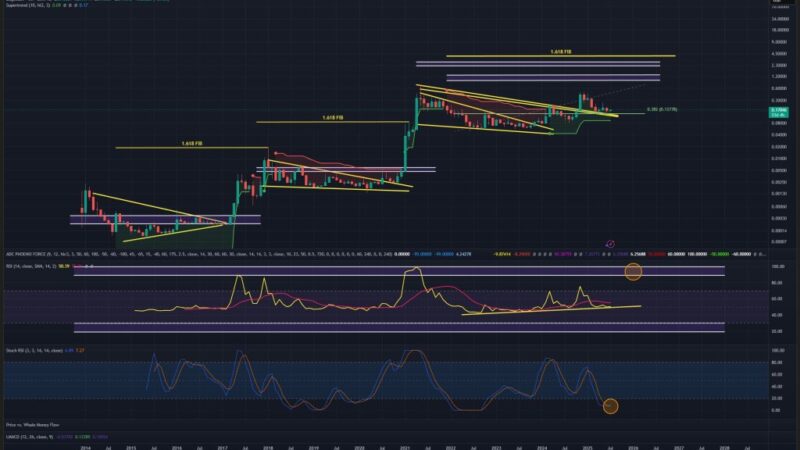Asset Managers Should Only Engage Staking Platforms With Strong Security — Andrew McFarlane


Institutional investors seeking to earn rewards from digital asset token staking must be aware of the associated risks and should take steps to protect their clients, Andrew McFarlane, CTO at the Web3 infrastructure company Validation Cloud, has said. According to McFarlane, slashing, which is a penalty imposed on tokens staked on a validator who contravenes the rules of the network, is one particular risk asset managers must be aware of.
The Importance of SOC2 Attestation Reports
To limit the chances of being adversely impacted by the actions of a rogue validator, asset managers should ensure that their chosen validator has the requisite experience. In his written answers sent to Bitcoin.com News via Telegram, the Validation Cloud CTO said asset managers “should engage staking-as-a-service providers with strong security and slashing insurance.”
Another way asset managers can reassure their clients that their staking-as-a-service provider is a bona fide industry player is by choosing an audited staking platform. Staking service providers are either issued the SOC2 Type 1 or Type 2 attestation reports. While both attestations are valuable, McFarlane told Bicoin.com News that he sees SOC2 Type 1 as a better attestation report.
Meanwhile, when asked about the Ethereum network’s low staking ratio, McFarlane said its only because the “complete” staking became effective after the so-called Shapella upgrade in April. The CTO revealed that since the upgrade there has been an “over 50% growth in staked Ethereum over the last six months.”
Below are Andrew McFarlane‘s answers to all the questions sent.
Bitcoin.com News (BCN): What is staking-as-a-service and how does it differ from the complex decentralized staking protocols like Lido, and why would institutional asset managers want this?
Andrew McFarlane (AM): The Staking-as-a-Service product enables asset managers to support the operations of a blockchain network, without the burden of launching, maintaining, and scaling the necessary infrastructure – in return, asset managers earn significant rewards generated by the network.
The ability to provide this service without taking custody (non-custodial) of the tokens is the defining characteristic of a Staking-as-a-Service solution. This is in contrast with protocols like Lido or centralized exchanges, which require asset managers to deposit funds into these systems first, rather than staking directly from their wallets/custodians.
Institutional asset managers typically have strict obligations to hold assets with qualified custodians and procure tech partners who are SOC2-compliant. Staking-as-a-Service uniquely satisfies both of these obligations, allowing asset managers to keep their tokens in a custodian while being serviced by secure, compliant infrastructure.
BCN: In your opinion, what are the most common risks institutional asset managers face today with staking and how can they, or the staking service providers they use, eliminate such risks?
AM: The main risk in Proof of Stake (PoS) networks is slashing, which refers to the penalty imposed on tokens staked on a validator who contravenes the rules of the network – the severity of the penalty can vary depending on the protocol. Institutional asset managers should be aware of the specific slashing risks for the networks in which they stake.
Validators are responsible for proposing and validating new blocks of transactions, yet proposing more than 1 block (double signing), proposing invalid blocks, or prolonged downtime can result in slashing by the network. While such events are rare, experienced operators significantly reduce this risk. Institutional asset managers should engage Staking-as-a-Service providers who have strong preventative (e.g. security) and corrective (e.g. slashing insurance) measures in place for their clients.
BCN: Your company Validation Cloud recently introduced an institutional staking-as-a-service platform to offer on-demand deployment and rewards automation, among other things. What is on-demand deployment and reward automation and why should Web2 asset managers care about this?
AM: Validation Cloud’s platform was purpose-built to onboard institutional assets – the largest asset managers in the world are rapidly entering Web3 and in the near future, there will be over a trillion dollars in assets staked. As an example of scale, in order to facilitate the next $100M in staked Ethereum, 1.5M additional validators are needed. Furthermore, asset managers demand real-time infrastructure to stake/unstake, in order to facilitate dynamic, programmatic portfolio management. With respect to rewards automation, Validation Cloud has simplified the flow with on-chain smart contracts, which eliminates intermediaries and counterparty risk – driving superior experience and performance.
BCN: Validation Cloud’s staking platform claims to be SOC2 Type 1 compliant. Could you tell our readers what this is all about and how it differs from the SOC2 Type 2 certification that other staking providers like Consensys have received?
AM: Acknowledging that compliance is critical for institutional asset managers and traditional enterprises, Validation Cloud prioritized SOC2 – completing its audit with SF-based Sensiba LLP in August. Remarkably, only a small fraction of Web3 companies have achieved SOC2, in fact, Validation Cloud is the only company providing Staking and Node API to achieve SOC2. Within Web3, SOC2 holds pivotal importance for bridging the gap with traditional enterprises, aligning industry standards with those of Web2.
SOC2 defines criteria (security, availability, integrity, confidentiality, privacy) for managing customer data. The main difference between SOC 2 Type 1 and Type 2 lies in the duration of evaluation. Type 1 focuses on security controls at a specific point in time, whereas Type 2 covers those controls over a period of time, typically several months. Validation Cloud’s Type 2 observation period will conclude at the end of 2023.
BCN: According to Staking Rewards, only about 23% of the eligible ETH is currently being staked or delegated to the network. In contrast, other proof-of-stake networks like Solana, Cardano and Aptos have a staking ratio of over 60%. What explains Ethereum’s relatively low staking ratio and how would the increased institutional adoption of staking affect it?
AM: Ethereum has a lower staking ratio since its complete staking mechanism has only been in effect since April 2023 when the Shapella upgrade enabled the ability to unstake Ethereum. While “The Merge” in September 2022 ushered in the proof-of-stake consensus mechanism and the ability to stake Ethereum, it was impossible to unstake that Ethereum until the Shapella upgrade. Shapella was the inflection point for institutional asset managers, driving over 50% growth in staked Ethereum over the last six months.
What are your thoughts on this interview? Let us know what you think in the comments section below.

